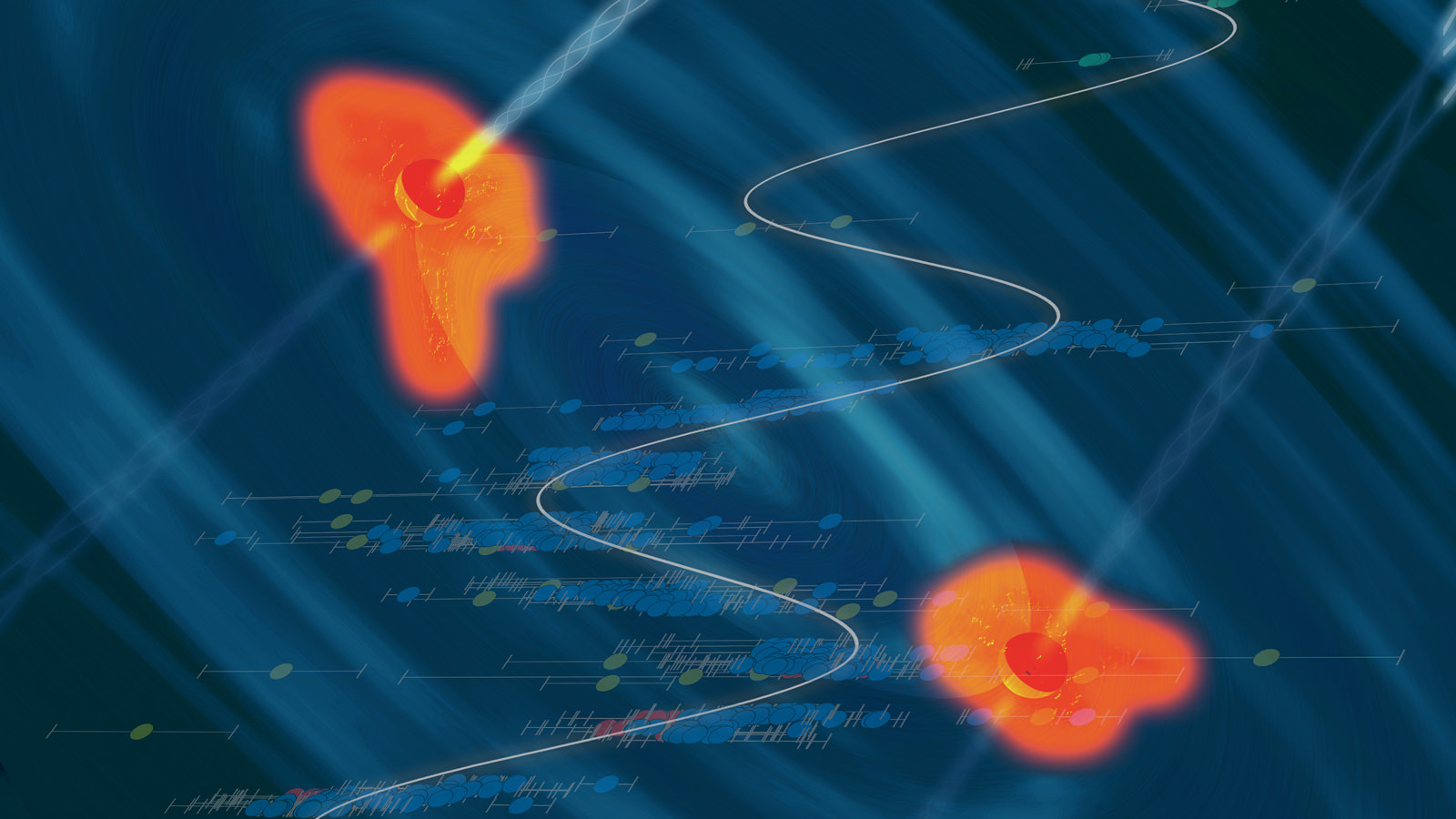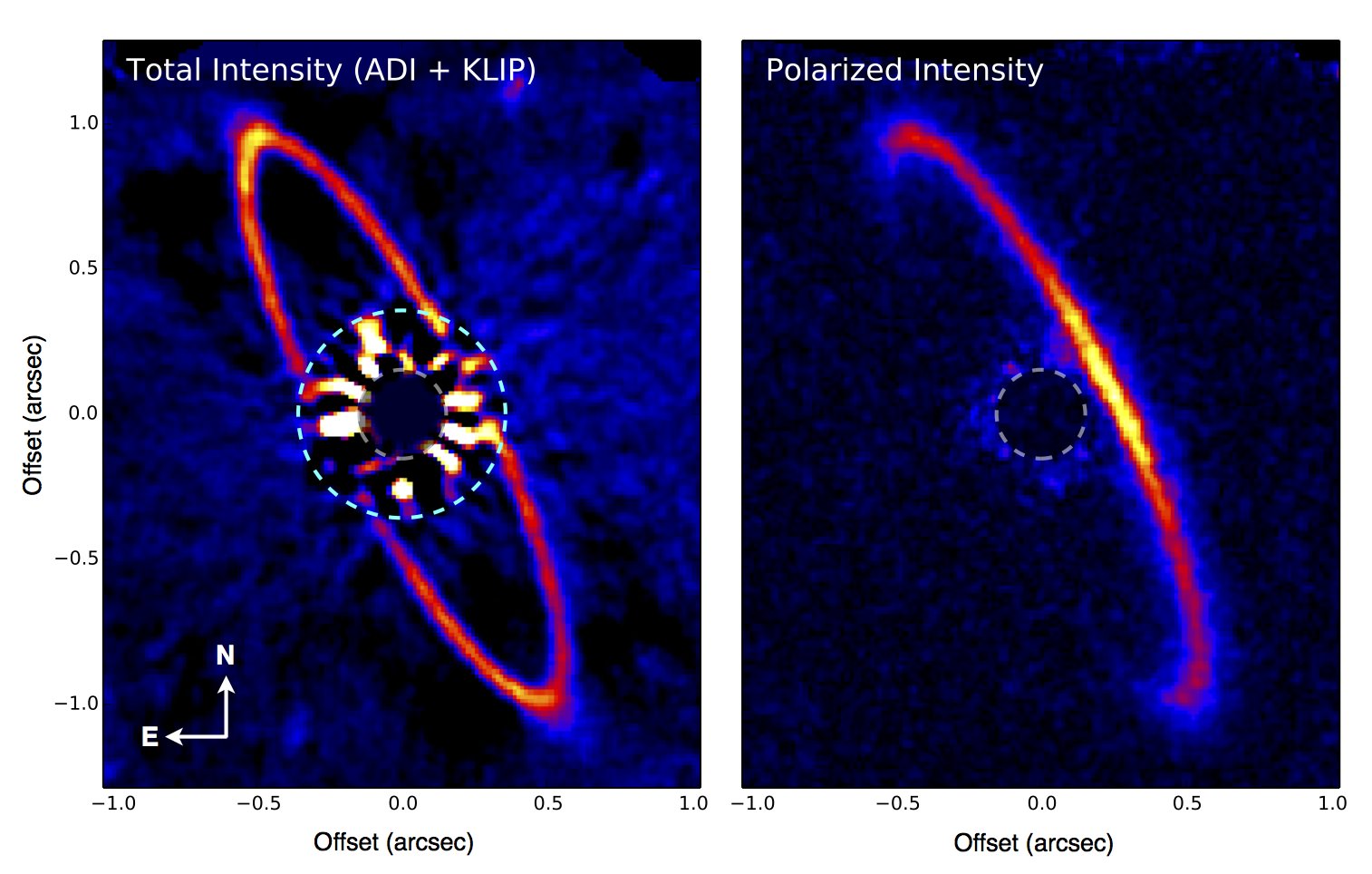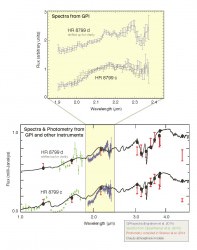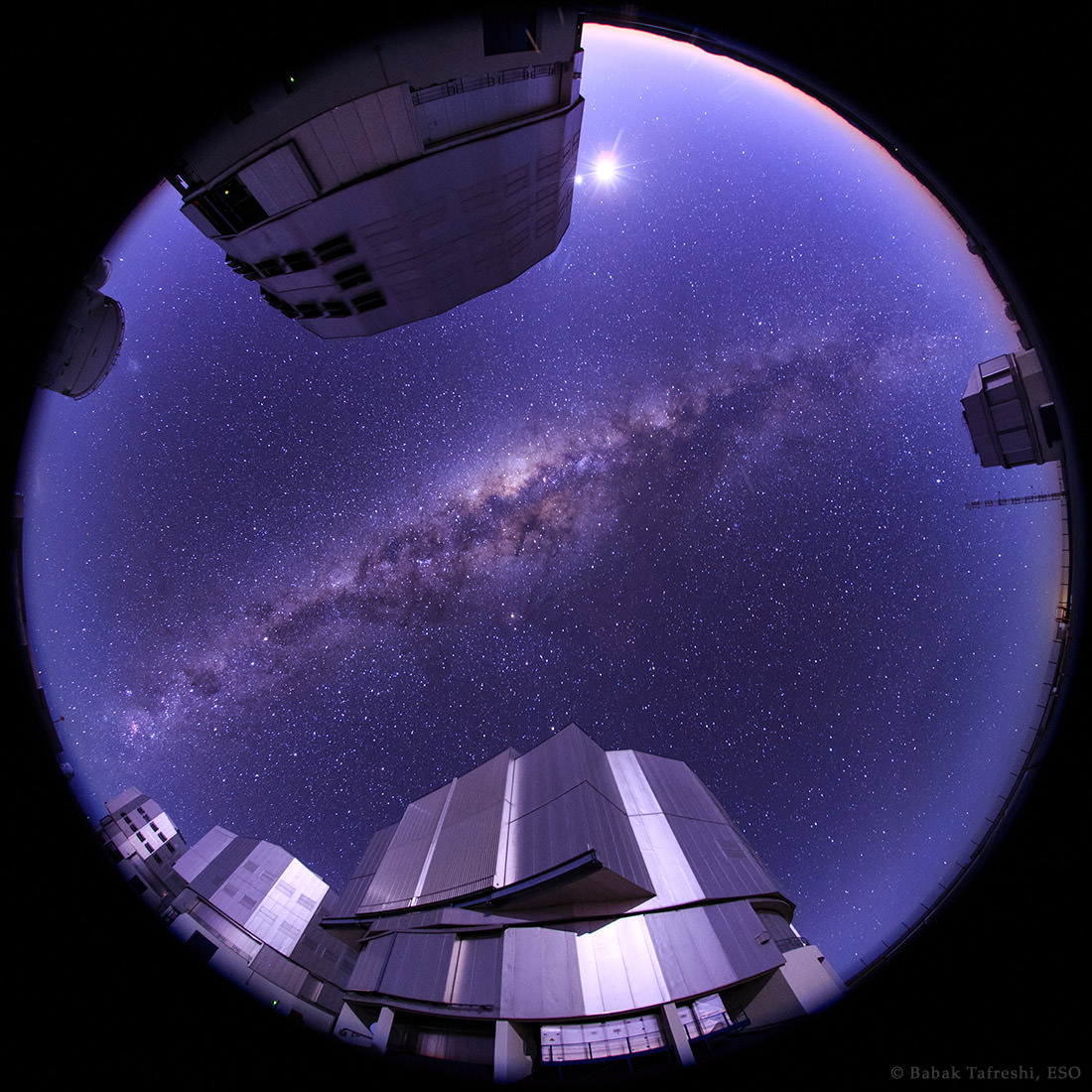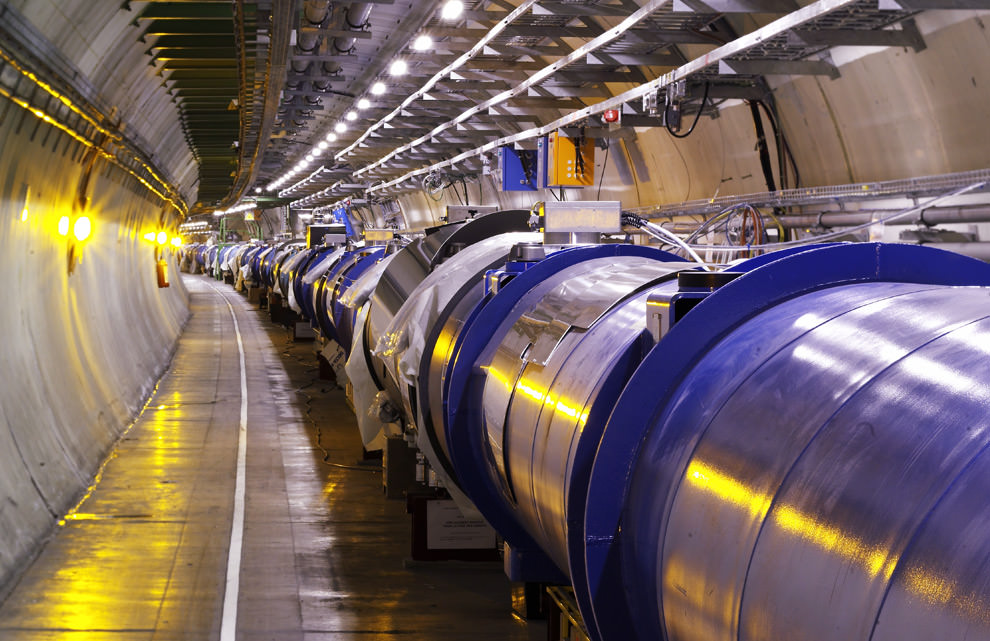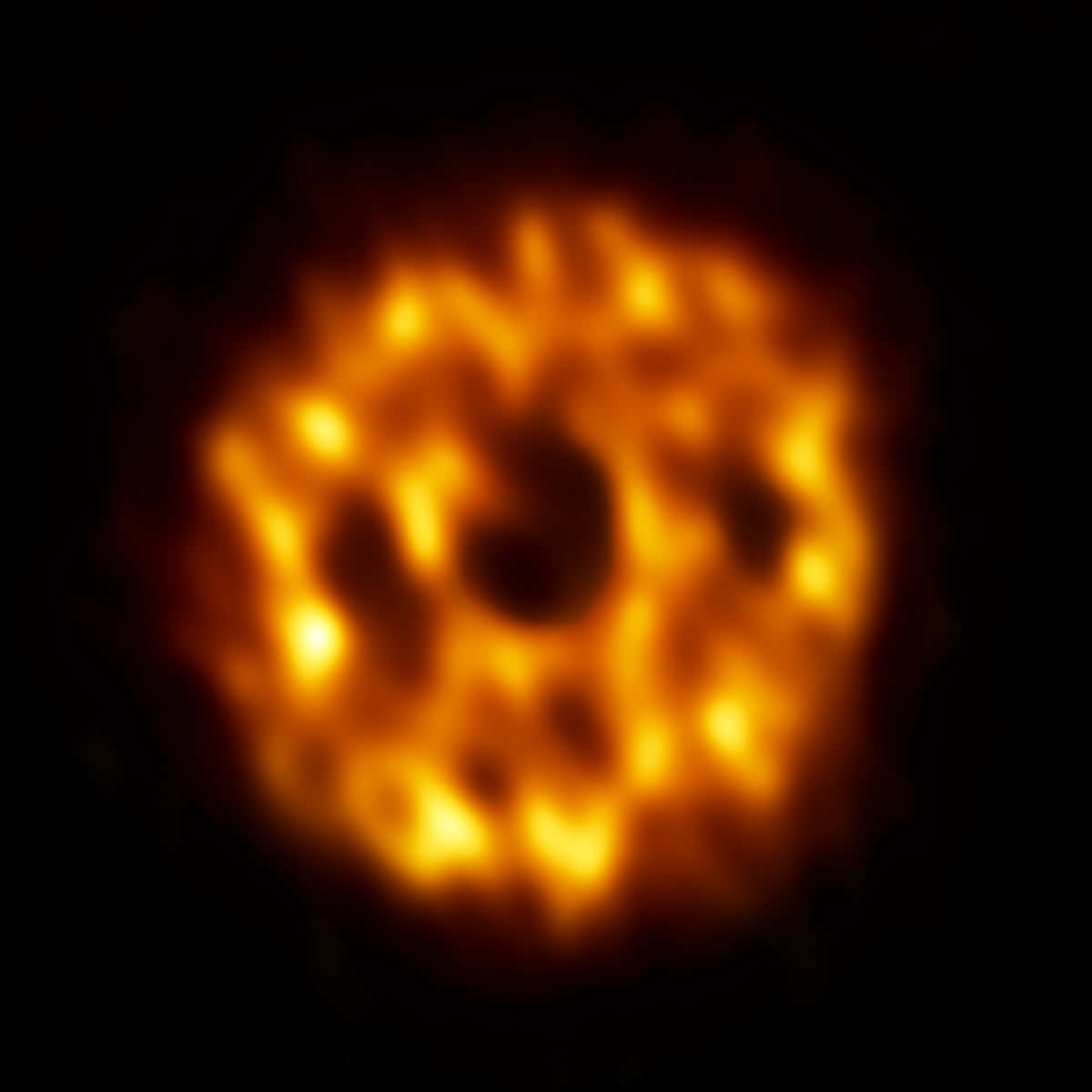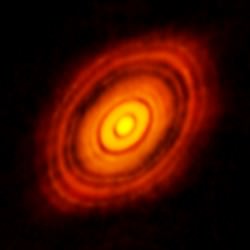Most large galaxies harbor central supermassive black holes with masses equivalent to millions, or even billions, of Suns. Some, like the one in the center of the Milky Way Galaxy, lie quiet. Others, known as quasars, chow down on so much gas they outshine their host galaxies and are even visible across the Universe.
Although their brilliant light varies across all wavelengths, it does so randomly — there’s no regularity in the peaks and dips of brightness. Now Matthew Graham from Caltech and his colleagues have found an exception to the rule.
Quasar PG 1302-102 shows an unusual repeating light signature that looks like a sinusoidal curve. Astronomers think hidden behind the light are two supermassive black holes in the final phases of a merger — something theoretically predicted but never before seen. If the theory holds, astronomers might be able to witness two black holes en route to a collision of incredible scale.
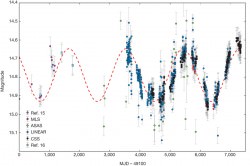
Graham and his colleagues discovered the unusual quasar on a whim. They were aiming to study quasar variability using the Catalina Real-Time Transient Survey (CRTS), which uses three ground-based telescopes to monitor some 500 million objects strewn across 80 percent of the sky, when 20 or so periodic sources popped up.
Of those 20 periodic quasars, PG 1302-102 was the most promising. It had a strong signal that appeared to repeat every five years or so. But what causes the repeating signal?
The black holes that power quasars do not emit light. Instead the light originates from the hot accretion disk that feeds the black hole. Orbiting clouds of gas, which are heated and ionized by the disk, also contribute in the form of visible emission lines.
“When you look at the emission lines in a spectrum from an object, what you’re really seeing is information about speed — whether something is moving toward you or away from you and how fast. It’s the Doppler effect,” said study coauthor Eilat Glikman from Middlebury College in Vermont, in a news release. “With quasars, you typically have one emission line, and that line is a symmetric curve. But with this quasar, it was necessary to add a second emission line with a slightly different speed than the first one in order to fit the data. That suggests something else, such as a second black hole, is perturbing this system.”
So a tight supermassive black hole binary is the most likely explanation for this oddly periodic quasar.
“Until now, the only known examples of supermassive black holes on their way to a merger have been separated by tens or hundreds of thousands of light years,” said study coauthor Daniel Stern from NASA’s Jet Propulsion Laboratory. “At such vast distances, it would take many millions, or even billions, of years for a collision and merger to occur. In contrast, the black holes in PG 1302-102 are, at most, a few hundredths of a light year apart and could merge in about a million years or less.”
But astronomers remain unsure about what physical mechanism is responsible for the quasar’s repeating light signal. It’s possible that one quasar is funneling material from its accretion disk into jets, which are rotating like beams from a lighthouse. Or perhaps a portion of the accretion disk itself is thicker than the rest, causing light to be blocked at certain spots in its orbit. Or maybe the accretion disk is dumping material onto the black hole in a regular fashion, causing periodic bursts of energy.
“Even though there are a number of viable physical mechanisms behind the periodicity we’re seeing — either the precessing jet, warped accretion disk or periodic dumping — these are all still fundamentally caused by a close binary system,” said Graham.
Astronomers still don’t have a good handle on what happens in the final few light-years of a black hole merger. And of course these two black holes still won’t collide for thousands to millions of years. Even watching for the period to shorten as they spiral inward would dwarf human timescales. But the discovery of a system so late in the game proves promising for future work.
The results have been published in Nature.

